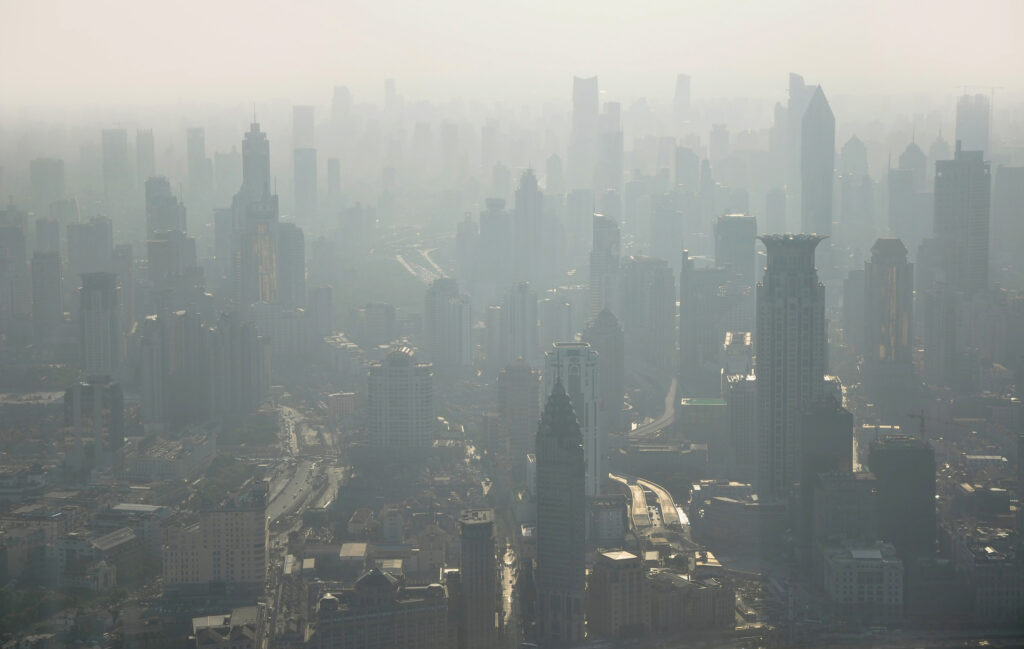IPCC Climate Report is Troubling, But Presents a Green Manufacturing Opportunity
Share

We need to work urgently to reverse trends leading toward climate catastrophe; American manufacturing is part of the solution.
The Intergovernmental Panel on Climate Change, a science research group within the United Nations, on Monday released a major report that reached one unequivocal, worrisome conclusion: the effects of climate change are here, irreversible, and worsening.
The report makes for a deeply disturbing read. We’ve already heated the planet by roughly 1.1 degrees Celsius (2 degrees Fahrenheit), largely due to fossil fuel emissions, which is causing heat waves, floods, wildfires, and an intensification of extreme weather events (once in a generation storms, for example, will now be frequent occurrences).
What’s worse: even if we start to sharply cut emissions today, we’re still locked into more warming for at least the next two decades. There’s real, dangerous potential for nearly 1 billion people worldwide to suffer from warming climates — forcing millions, even in the U.S., to become refugees — and decimating our global ecosystems.
While I don’t want to sugarcoat the picture painted by the IPCC report, it did still have a drop of optimism. If global leaders can work together, and come up with a large, coordinated response, there’s still time to stop warming around 1.5 degrees Celsius and stave off the worst case outcomes. But that action needs to start now.
Fortunately, everyone from President Biden to the Pope are set to take part in the COP26 climate conference in November in Scotland to discuss doing exactly that.
So what are some climate policies that are going to be on the agenda? And how can rebuffing climate change be used to catalyze an American manufacturing renaissance? Let’s break it down.
What’s really important to recognize is that American manufacturing is cleaner than the competition. As avid blog readers may remember, we’ve discussed reports that highlight how the U.S. steel industry has a major carbon advantage — American-made steel is 75-320% more carbon efficient than global producers like China, India, Mexico and Brazil.
Domestic steel companies also are working hard to reduce their emissions even further. U.S. Steel, for example, plans to become carbon neutral by 2050, including via products like its verdeX line, which will produce only a quarter of the carbon emissions previously generated in the steelmaking progress. Cleveland Cliffs also has committed to significantly reducing its emissions, and is already ahead of target.
That’s why it is so important to maintain a strong and stable domestic steel industry. If the U.S. industry were to disappear — something that just a few years ago wasn’t out of the question — the alternative would be importing more dirty steel from overseas. That would make it even harder to mitigate the impact of climate change.
There are other areas in which shifting more manufacturing back to the United States will help the climate by reducing emissions exports — which a report from 2018 estimated may be 25 percent of all emissions globally.
One way to do this, for example, is by reshoring production of solar panels domestically. China accounts for around 80% of the global solar panel supply chain. This isn’t just a climate issue; Chinese solar panels have been linked to gross human rights violations and have been mired in a host of other environmental and anti-competition issues. The United States needs to ensure that we support solar manufacturing here, where it can be regulated to be greener and better than abroad — and produce American manufacturing jobs as a byproduct.
Then there is the need to transition from gas-powered cars, trucks and SUVS to electric and other zero emissions vehicles. Unfortunately, the United States is well behind China and other nations when it comes to production of these vehicles (and the supply chain and infrastructure needed to support them).
But that may soon change. The Bipartisan Infrastructure Deal the Senate just passed invests in transforming our electric grid and clean energy technology manufacturing — including electric vehicles. Meanwhile, the Biden administration has made the transition to EVs a priority, and has pledged to enact policy to encourage local production, too.
If we implement the correct EV policies (which includes Buy America preferences), the U.S. stands to create around 2 million new jobs and help the U.S. lead the world in laying out greener infrastructure. It also sets a tone about how industrial and climate policy goals can be tackled in conjunction to mutual benefit.
Another key instrument for global climate policy is trade. These issues have been highlighted by the European Union’s recent implementation of a carbon border tax that will penalize non-EU companies seeking to export to the EU on the basis of their local environmental regulations.
For American manufacturers, policies like this may pose a problem as they can make it harder to export to the EU market if penalties are imposed. Conversely, they would also protect American manufacturers whose production costs have risen due to environmental offsets from cheaper, dirtier foreign competition. Weighing into the debate, a group of 19 Republican Senators wrote a letter on Tuesday to President Biden calling on him to oppose the EU’s tariffs. Other policymakers, however, have argued in favor of an approach that would see the U.S. impose a similar tariff scheme, and integrate itself with Europe into a global emissions-reducing trade policy.
Whatever the case, it’s clear that trade policy is going to be at the center of the international dialogue on climate action. The United States should follow an approach that balances emissions reductions with ensuring manufacturers have the tools they need to reduce new emissions.
As the IPCC report makes clear, there is a whole lot of work to do to save our planet. But let there be no doubt: preventing climate disaster won’t happen in spite of American manufacturing, but because of it.
